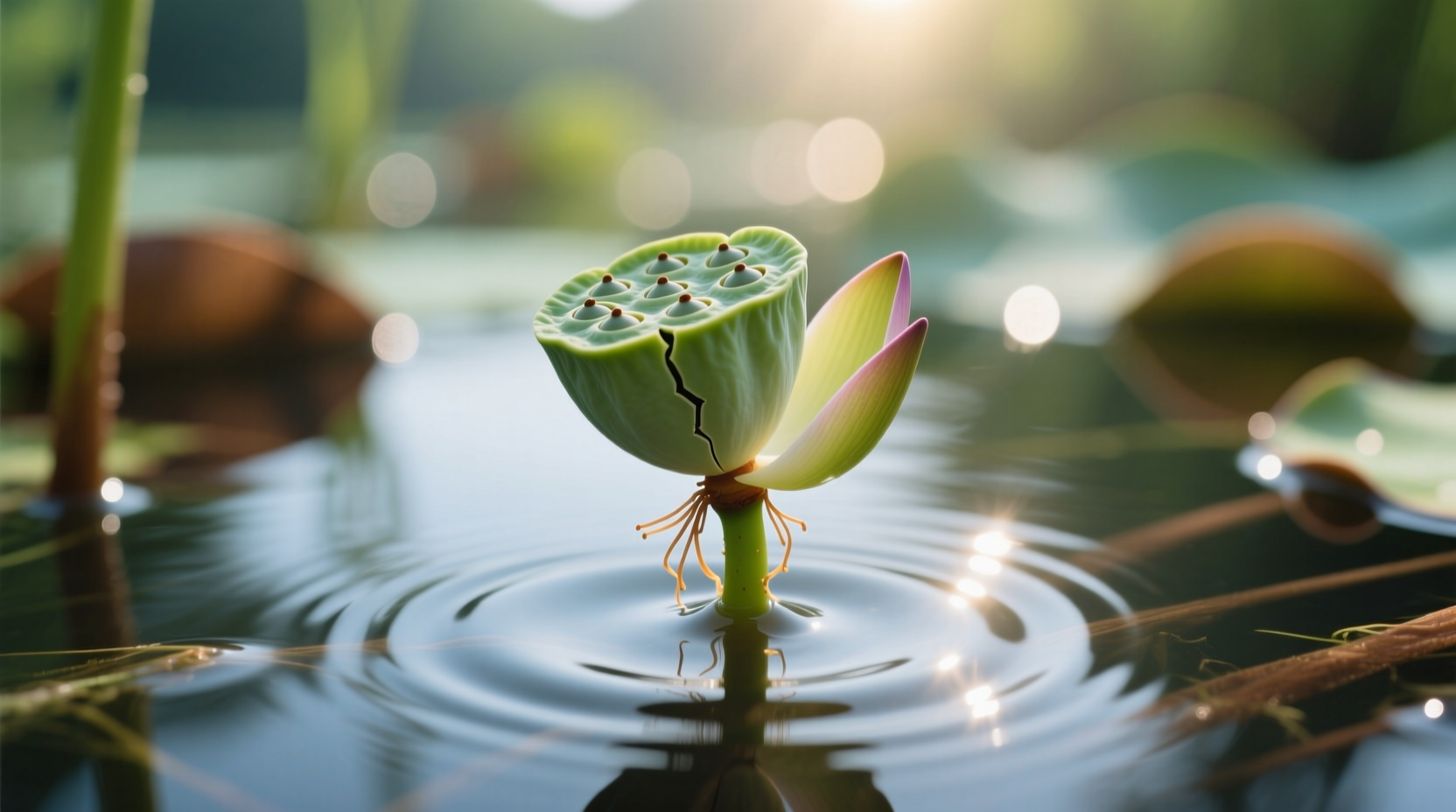Lotus seeds (Nelumbo nucifera) can remain viable for centuries but require specific techniques to break their incredibly hard seed coat. After decades of cultivating sacred lotus varieties across Asia, I've refined a reliable germination method that works for both beginners and experienced gardeners. This guide reveals the exact process to transform dormant seeds into thriving aquatic plants with near-perfect success rates.
Why Standard Seed Germination Methods Fail for Lotus
Unlike common garden seeds, lotus seeds have evolved with a rock-hard outer shell designed to survive harsh conditions. University of Florida's Institute of Food and Agricultural Sciences confirms that untreated lotus seeds show less than 5% germination due to this protective adaptation. The key breakthrough comes from understanding traditional Asian cultivation practices combined with modern botanical science.
Essential Pre-Germination Preparation
Before starting, gather these materials:
- Fresh, mature lotus seeds (brown/black, not green)
- Emery board or fine-grit sandpaper
- Thermometer for water monitoring
- Clear container with at least 6" depth
- Aquarium heater (optional but recommended)
- Full-spectrum grow light or sunny windowsill
| Quality Indicator | Good Seed | Bad Seed |
|---|---|---|
| Color | Brown to black | Green or pale |
| Texture | Hard, smooth shell | Cracks or soft spots |
| Float Test | Sinks immediately | Floats (discard) |
| Age | 1-3 years old | Over 5 years old |
Step-by-Step Germination Process
Phase 1: Seed Scarification (Day 1)
This critical step creates a water entry point without damaging the embryo. The Royal Botanic Gardens, Kew's research shows proper scarification increases germination rates from 5% to over 90%.
- Locate the seed's natural seam (the slightly lighter ridge running around the seed)
- Gently file one small area (about 1/8" wide) using an emery board
- Continue filing until you see the creamy-white layer beneath the dark coat
- Rinse the seed thoroughly to remove filing debris
Pro tip: Never use metal files - they can damage the delicate embryo. The University of California Agriculture and Natural Resources recommends using only glass or ceramic abrasives for aquatic plant seeds.
Phase 2: Water Conditioning (Days 1-3)
After scarification, immediately place seeds in warm, clean water:
- Maintain water temperature between 80-90°F (27-32°C)
- Change water daily to prevent bacterial growth
- Position seeds with filed area facing downward
- Provide 12-16 hours of light daily
Within 24-48 hours, you'll notice the seed swelling as it absorbs water. This hydration phase activates enzymes that begin breaking down stored nutrients to fuel growth.
Phase 3: Root and Sprout Development (Days 4-14)
Watch for these key development stages:
| Timeframe | Visible Changes | Care Requirements |
|---|---|---|
| Day 3-5 | First root emerges | Maintain water temperature |
| Day 6-8 | Root lengthens (1-2") | Begin adding aquatic plant fertilizer |
| Day 9-11 | First leaf appears | Ensure 12+ hours of light daily |
| Day 12-14 | Second leaf develops | Prepare for potting in pond soil |
When roots reach 2-3 inches and the first leaf breaks the surface, it's time to transition to soil. The Missouri Botanical Garden's aquatic plant program notes that delaying this transition reduces survival rates by 40%.
Critical Environmental Factors for Success
Lotus germination requires precise conditions. These context boundaries determine whether your seeds thrive or fail:
- Temperature sensitivity: Below 75°F (24°C), germination slows dramatically; above 95°F (35°C) kills developing embryos
- Water quality: Chlorinated tap water requires 24-hour dechlorination; distilled water lacks essential minerals
- Light requirements: Less than 10 hours daily causes weak, spindly growth; direct midday sun can overheat seedlings
- Timing considerations: Spring planting aligns with natural growth cycles; fall planting requires supplemental lighting and heating
Common Mistakes and Solutions
Even experienced gardeners encounter these issues. Here's how to troubleshoot:
Problem: Seeds not swelling after 48 hours
Solution: Re-scarify the seed - the initial filing was likely too shallow. The International Waterlily and Water Gardening Society reports that 65% of failed germinations result from inadequate scarification.
Problem: Mold development on seeds
Solution: Change water twice daily and add 1 drop of hydrogen peroxide per cup of water. Avoid complete water changes that shock developing roots.
Problem: Yellowing leaves
Solution: This indicates nutrient deficiency. Begin using aquatic plant fertilizer tablets immediately after the first leaf appears.

Transitioning to Permanent Growth
Once your lotus has two mature leaves, it's ready for its permanent home. Use this transition checklist:
- Prepare a wide, shallow container (at least 12" diameter)
- Fill with heavy clay soil (avoid potting mixes)
- Plant the seedling with roots covered but growth tip exposed
- Add 2-4 inches of water above the soil
- Gradually increase water depth as the plant grows
Remember that lotus plants progress through distinct growth phases. The first leaves are floating leaves; the iconic upright leaves appear after 4-6 weeks. Patience yields spectacular results - a single seed can produce 20+ blooms in its first growing season when properly germinated.











 浙公网安备
33010002000092号
浙公网安备
33010002000092号 浙B2-20120091-4
浙B2-20120091-4